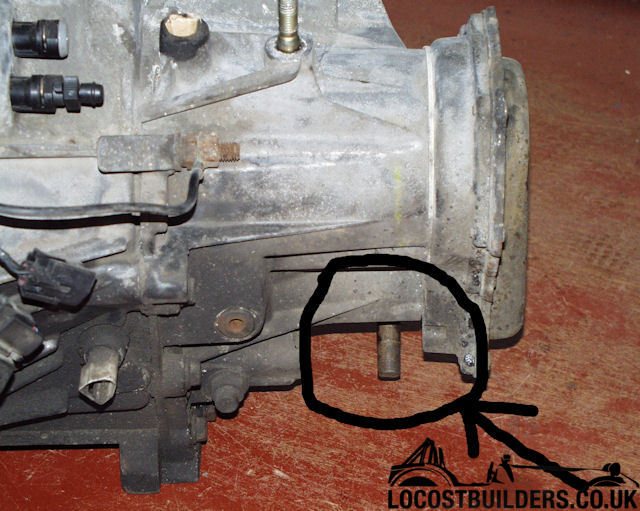Trial fitting the engine
Decided that I need to trial fit the engine in the unpainted chassis:
* Reduce the bodge marks on the chassis paint
* Solve any bracket problems
* Solve the aux belt pulley problem
* Fit the exhaust
* Check the Racing Puma Plenium fit
I bought an engine crane and a balance bar attachment, this aided single handed engine fit. The biggest problem was a device that stuck out the bottom of the gearbox, called an indent spring that totally prevented fitting. The Sigma engine has two of these one for forward gears and another for 5th gear apparently.


The other problem was with the offside mount that needed extensive surgery to make it fit and still be able to get the alternator off.

The problem with the Sigma belt system is I want to remove a) The PAS pump and b) the Aircon pump locations. This hardware adds considerably to the weight and it is complications a kit car can do without, just like Airbags, electric windows, alarm systems, electric everything etc etc. Identification: 1)belt, 2) Idler wheel, 3) Alternator, 4) PAS pump, 5) Engine pulley, 6) Water pump 7) Tensioner
The issue is the engine is 15 years old and versions without PAS pump are few and far between. The only car I could find without Aircon was on a pile 3 high in the scrappy. I looked on ebay but it was hard to identify the bits. So I made a replacement bracket for the Tensioner as the existing one was a heavy steel casting and originally housed the Tensioner and Aircon pump but without the Aircon pump the tensioner was in the wrong place. The PAS pump was to be changed into an idler wheel from a Transit.
The Tensioner bracket was fabricated in cardboard first then welded up in 6mm mild steel plate from the patterns produced.

The (replacement PAS) v pulley idler shaft was fabricated/turned in the lathe and attached to the fabricated body.
The exhaust is important at this stage, if I want to run up the engine that was restored by Sitec. With a piece of luck I found the original exhaust from the westfield SEIW that I run about in, it has a built in cat and fits ideally to the Sylva. I got Graden of Stainless Creatrions to make me some pipework to connect up to the Sylva supplied manifold.
References
Contents
http://sylvabuild.blogspot.co.uk/2012/01/sylva-j15-is-kit-car-designed-by-jeremy.html
 * Increased passenger leg room requiring a custom fuel tank (see below) and some metalwork changes to the foot well.
* Increased passenger leg room requiring a custom fuel tank (see below) and some metalwork changes to the foot well.



















